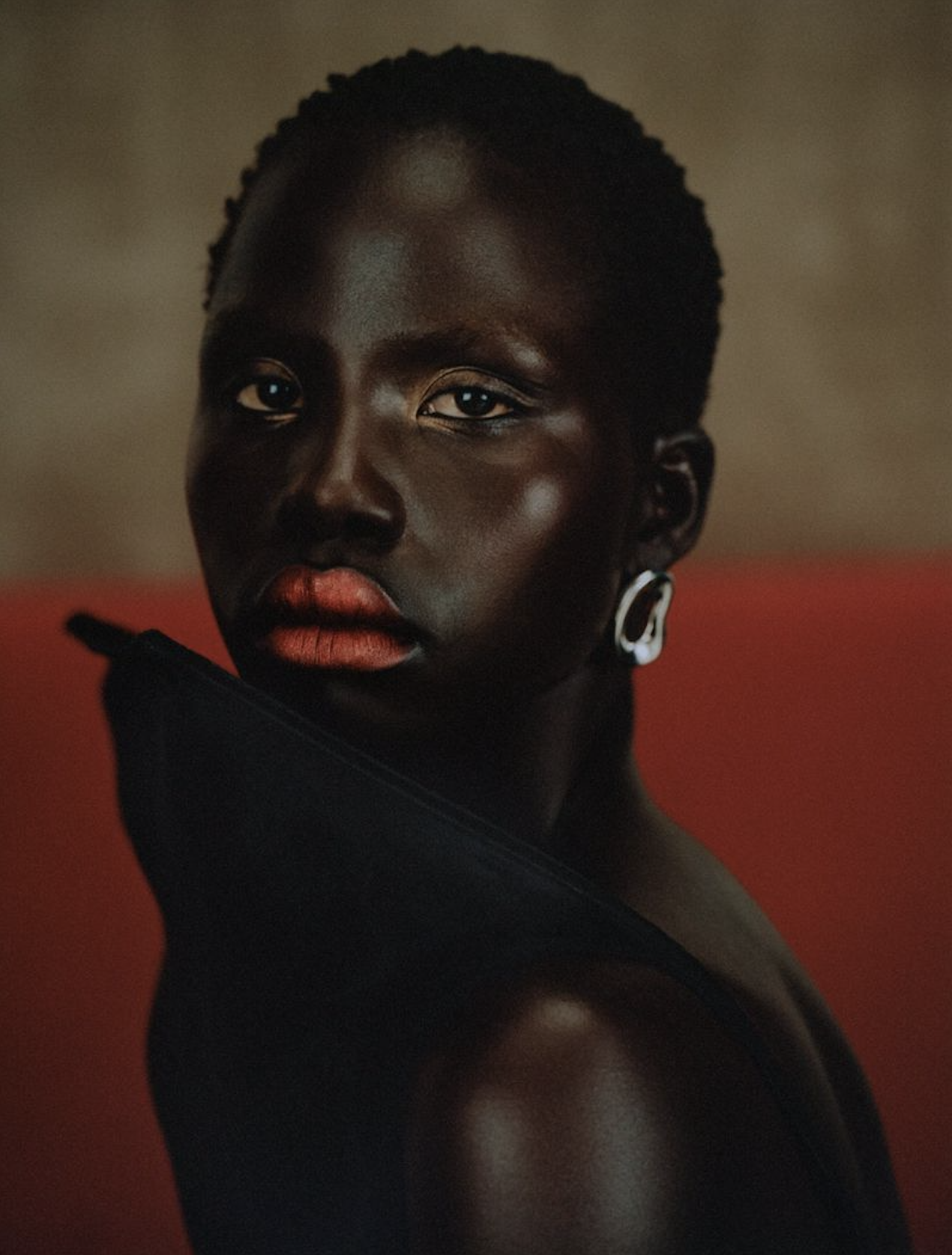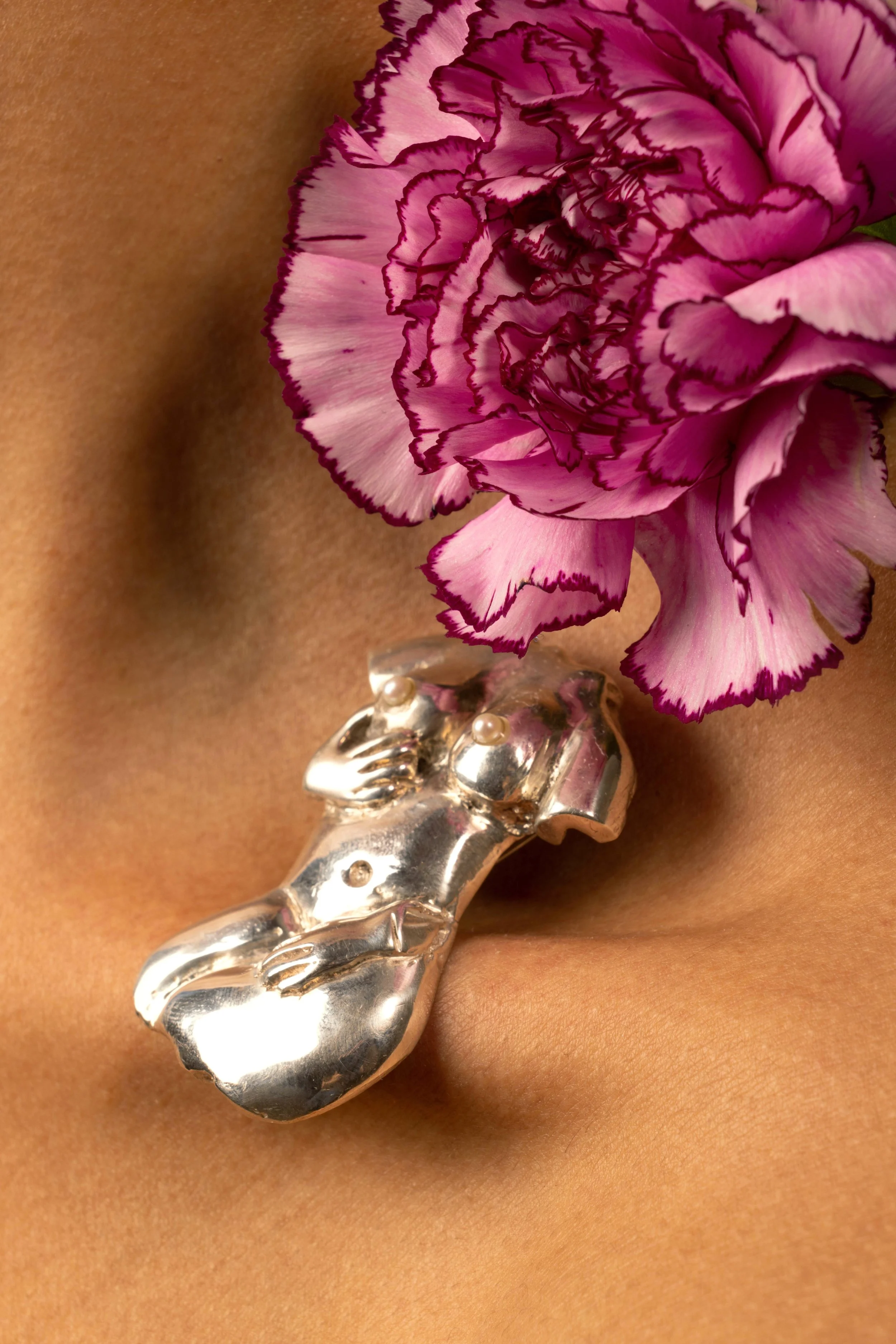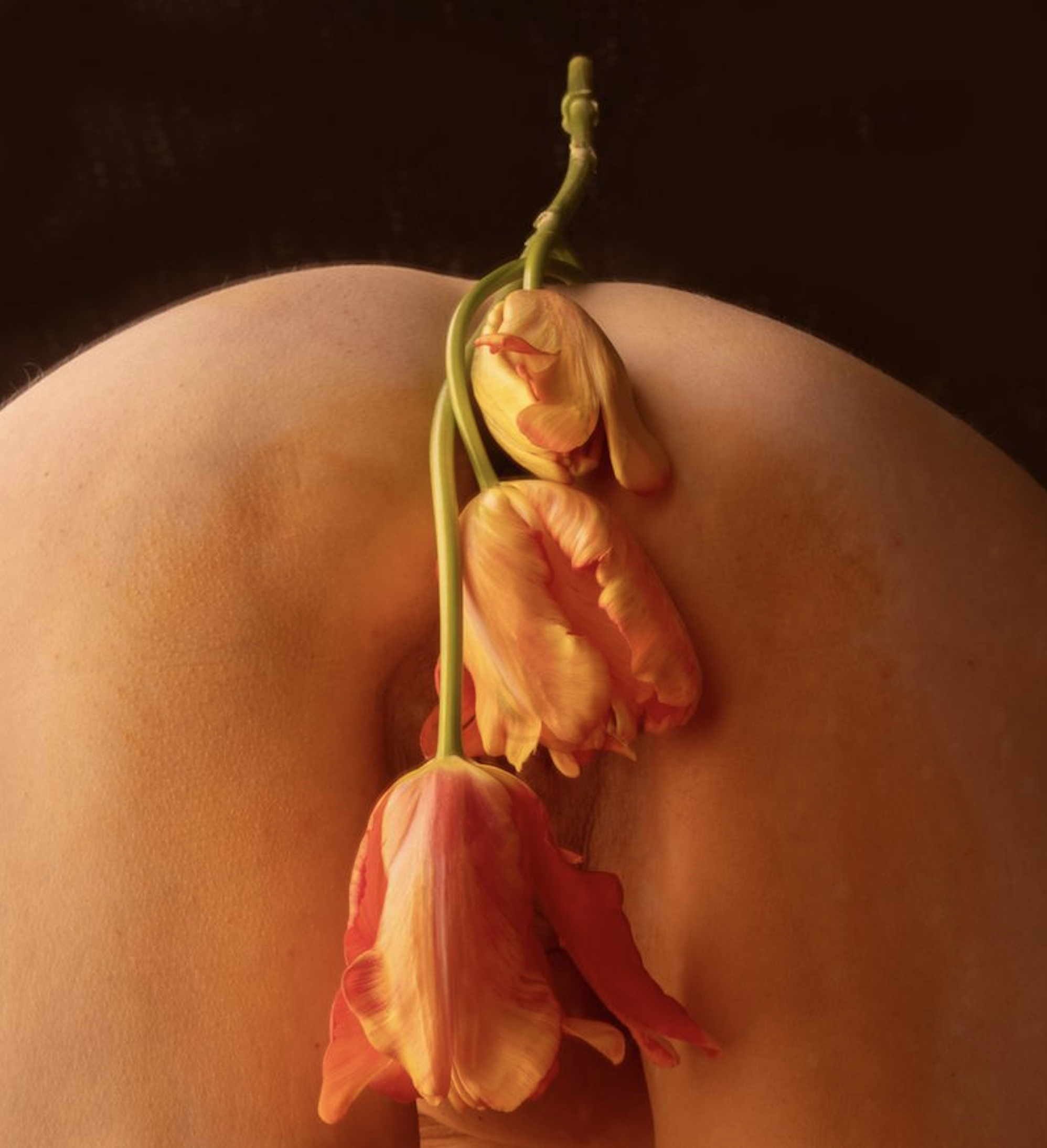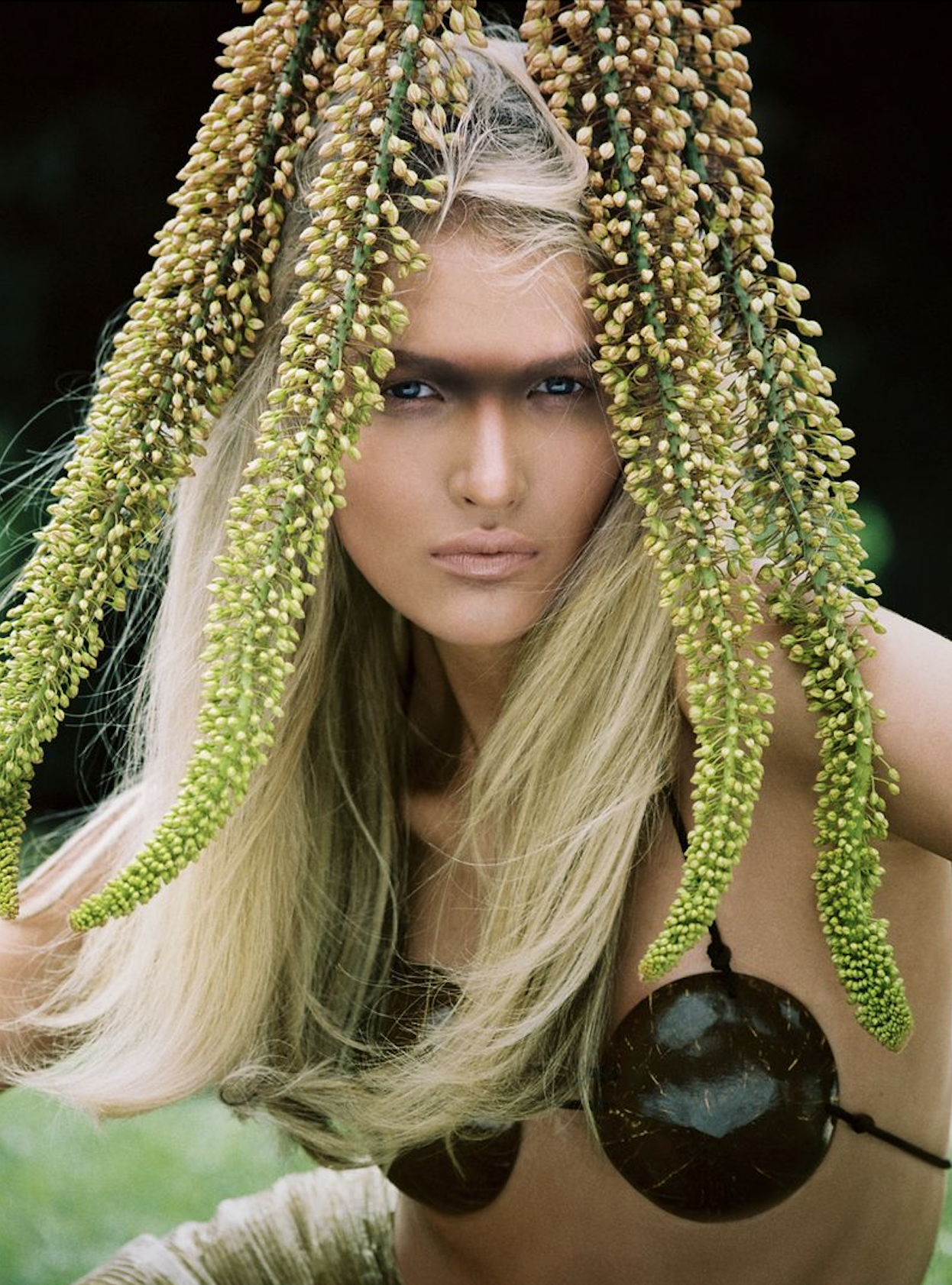The History of Courtesans Thru the Lens of Louboutin Beauty's 2025 Rouge Stiletto Vinyl Gloss Campaign
/Red lips have always fascinated Anne of Carversville because of the stories about women’s lives and morality standards that have accompanied the wearing of red lipstick for thousands of years.
When AOC shared news of Christian Louboutin Beauty’s [IG] October 2023 campaign for Louboutin Beauty, we called his stiletto-inspired makeup design a “10-Alarm Fire”. Top model Daphne Groeneveld took the four-models spotlight, showcasing packaging design AOC described as “so visually-compelling, competitors would be recklessly-stupid to copy them.”
Rouge Stiletto Vinyl Gloss
Groeneveld returns today, fronting Christian Louboutin’s early 2025 marketing for Rouge Stiletto Vinyl Gloss maxi lip gloss. Once again photographer Anthony Arquier [IG] captures Daphne, who is styled by Berenger Pelc./ Hair by Pierre Saint Sever; makeup by Morgane Martini; manicure by Romane Martini
Last October 2024, in response to a Vogue Greece beauty story, AOC wrote about the wearing of red lips in ancient Mesopotamia, as the Sumerians and later the Assyrians and Babylonians, turned red lipstick into a brilliant hue that not only signified beauty but also denoted social status and power.
We hadn’t seen this Rouge Louboutin Velvet Matte image of Daphne, released in fall 2024 by Arquier, but it fits perfectly into today’s narrative. All remaining images — note the bluish backgrounds — are from the new 2025 Louboutin, visually very bold campaign for Rouge Stiletto Vinyl Gloss lip gloss.
AOC did not speak about the rise of courtesans in Mesopotamia, writing about ‘cherry lips’ last fall. Our focus on the history of red-lips women didn’t prompt the right questions to trigger a look at the lives of courtesans.
Today is a new day. When and where did the concept of the courtesan arise? Was it a worldwide role for select women, a role crossing many different global cultures but with compatible definitions. AOC did not have a negative view of courtesans when raising questions about their history.
A Short History of Courtesans
In Mesopotamia The earliest evidence of courtesans in ancient history can be traced back to several ancient civilizations where these individuals played significant roles in social and cultural contexts. In ancient Mesopotamia, temple priestesses, often referred to as "sacred prostitutes," were involved in religious rites, highlighting a blend of the sacred and the secular that involved sexual service as part of worship. These practices are mentioned in the Code of Hammurabi, which provides one of the earliest written references to women who engaged in such roles.
In Greece The concept of the courtesan emerged more distinctly in Greece. Known as ‘hetaira’ [singular], these women were educated and cultured, providing companionship and intellectual engagement, alongside sexual relationships with their patrons. Unlike common prostitutes, ‘hetairai’ [plural] were often part of the upper echelons of society, occasionally influencing politics and philosophy, as noted in various classical texts including works by authors like Herodotus and Plato, who offer glimpses into their social functions.
Hetairai were distinct from other classes of women in ancient Greece. They were not simply entertainers or companions. Their ability to form relationships with influential men gave them access to political sessions and symposia, where they could express opinions and partake in the cultural life of the polis. They were instrumental in certain social functions, often serving as muses for art and literature, and their liaisons sometimes influenced political decisions.
The careers of famous hetairai, such as Aspasia, the companion of Pericles, exemplify the extraordinary influence they could wield. Through their beauty, intellect, and social acumen, courtesans in ancient Greece occupied a complex position that challenged conventional gender roles and demonstrated the nuanced landscape of female influence in antiquity.
In India Ancient texts in India also offer early textual evidence of courtesans, with references in ancient texts such as the Arthashastra and the Kamasutra. These texts outline the roles and intricate societal positions of courtesans within the courtly and urban settings, where they were esteemed for their artistic and intellectual accomplishments, demonstrating their complex social influence beyond mere sexual interactions. This multifaceted role is further evidenced by their depiction in Indian classical literature and drama, emphasizing their cultural significance throughout history.
In China The origins of courtesans in ancient China can be traced back to the Zhou Dynasty, which lasted from approximately 1046 to 256 BC. Their salons became cultural hubs where artistic and intellectual exchanges took place, influencing tastes and even political decisions. Courtesans were not just passive participants in these cultural dialogues but acted as contributors who could shape opinions and trends. In some instances, courtesans acted as mediators or diplomats, using their influence to broker deals or ease tensions between rival factions. Despite their contributions, these women often faced societal stigmatization, particularly from more conservative segments who viewed them as morally dubious.
In Italy The origins of courtesanship in Italy can be traced back to a complex interplay of social, economic, and cultural factors that emerged during the Renaissance. This date is striking for AOC, as we’ve turned our attention to the Renaissance and emergence of humanism in this time period. Additionally, the responsibilities of the wealthy during the Renaissance are very different from the crass, self-indulgent attitudes of today’s billionaires.
The Italian city-states, notably Venice and Rome, served as thriving hubs for commerce and culture. These cities attracted merchants, artists, diplomats, and scholars, creating a thriving melting pot of ideas and aspirations. Within this context, courtesans offered a blend of companionship and intellectual discourse, serving as muses to poets and patrons alike. They provided a discreet and sophisticated alternative to the often rigid societal norms governing marriage and female virtue, operating in an environment where education and wit in women were rare and highly prized.
In America Yes, there is a record of courtesans in America. But I need to catch up with the facts. I queried a specific question about mixed-race women in New Orleans, known as quadroons or octoroons, after reading about white women courtesans in urban cities like New York and Chicago.
The city's system of plaçage, a form of common-law marriage typically between European men and women of African or mixed descent, exemplified how racial and sexual boundaries were negotiated in ways unique to New Orleans.
Given the answer, I must now address ‘plaçage’ and will only add that these Louisiana women were influential and even power-brokers. This fact does not romance their difficult circumstances or racial inequity in America. Nor does it ignore the history of many free women of color in Louisiana, who married at the same rates as white women, according to historian Emily Clark.
Having written this disclaimer, if AOC concludes that courtesan women in history were most often considered to be privileged women with their own powers, it seems ‘racist’ to consider women of color in New Orleans as being only victims.
This research response regarding ‘plaçage’ is startling, for an informed person like myself. I next queried if this system of ‘plaçage’ existed across French colonies. The answer is ‘yes’, and my researcher added Spanish colonies as well. The practice was apparently not as prevalent among the British, where hierarchy was much more important.
In summary of a concept rarely discussed — courtesans as we know them today — Anne is plunging into this arena of women’s history headfirst, reminding myself to breathe deeply.
Many times I’ve written that when Anne gets behind the wheel, we do not know where we’re going. Today is one more example. ~ Anne









































